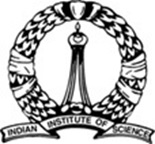1Energy and Wetlands Research Group, Centre for Ecological Sciences [CES],
3Centre for infrastructure, Sustainable Transportation and Urban Planning (CiSTUP), Indian Institute of Science, Bangalore – 560012, India. 2Lab of Spatial Informatics, IIIT-H, Hyderabad, India, *Corresponding author: cestvr@ces.iisc.ac.in
Citation : Bharath S, Rajan KS, Ramachandra TV (2013) Land Surface Temperature Responses to Land Use Land Cover Dynamics. Geoinfor Geostat: An Overview 1:4. doi:10.4172/2327-4581.1000112
|
||||||||||||||||||

